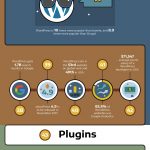Online stores are slowly but surely chipping away at traditional stores. Admittedly, most people still do the bulk of their shopping in brick and mortar stores. Still, online stores are slowly catching up. They get three times the growth rate of traditional stores.
Even though traditional stores are not out of the game yet, online stores seem to be a smart investment. Many top retailers, like Walmart, have an ecommerce website besides the regular store. All things considered, it only seems to be a matter of time before online shopping becomes the norm.
Although it is a much easier task to build an e-commerce store than a brick and mortar store, it has its own set of challenges like setting up a commerce website, collaborating it with stock warehouse, working in sync with shipping companies, optimizing the websites for search engines, and so on.
In this article, we are going to discuss loading speed of e-commerce website, one of the crucial factors that can make or break the e-commerce store. It can lead to bad search engine rankings, higher bounce rates, higher cart abandon rates, less trust in the web store, and a lot more. Hosting Tribunal curated a graphical resource with useful information on impacts of slow loading speed on such factors and more. It is presented below the article.
Let’s have a look at some of those interesting stats here in this article.
To start, long load times make visitors lose interest in a website. 53% of visitors leave if a website takes over 3 seconds to load.
Moreover, each second delay brings customer satisfaction down by 16%. Even worse, a whopping 64% of dissatisfied users don’t return to the same store. That’s a lot of potential customers, lost because of long load times.
Even if you get customers to look at your content, slow website speed affects things like shopping cart abandonment rates. This means your profit margin takes a significant hit. Each second of delay can cost you up to 7% of your conversions.
Luckily, there are a few simple ways to improve your web store’s loading speed.
To start, check if your web hosting has good response rates which is crucial for any website to have decent loading speed. If your tests with Google Chrome lighthouse tests show slower than average speed for time to first byte, then you might want to consider migrating to a new host. Considering the test results of 6 months on hosting tribunal, we see, Dreamhost with the lowest TTFB of 0.131 seconds amongst all top hosts can be a host partner for faster response rates. Besides that, it is also one of the cheapest compared to all other hosts. Choose it and increase your speed by half already.
If you are already with a fast host and a WordPress user, you could use following plugins to further increase your loading speed metrics.
WpSmush: For compressing and optimizing images, the biggest culprits in slow loading web stores after slow web hosting.
Fast Velocity Minify: A plugin that can minify your code to help you increase your loading speed.
W3 Total Cache: You could use this plugin to save static HTML files on your servers to provide them faster to browsers instead of processing PHP files every time, browsers ask for your web pages.
You can also use W3 Total Cache along Max CDN to make use of content delivery network technology to speed up your store.
If your WordPress store is still loading slow, you can further optimize with tips from here. Check them, speed up your store and enjoy better conversions.



![15 Work At Home Tips [infographic]](https://www.iblogzone.com/wp-content/uploads/2020/05/Tips-To-Work-From-Home-Infographic-150x150.jpg)


![21 Warnings That Indicate It’s Time to (Switch) Your Web Hosting Right Away[Infographic]](https://www.iblogzone.com/wp-content/uploads/2018/02/Time-to-Switch-Your-Web-Hosting-150x150.png)

![SEO Mistakes That Should Be Avoided At All Cost [infographic]](https://www.iblogzone.com/wp-content/uploads/2017/10/Common-SEO-Mistakes-Infographic-150x150.png)
![Detrmining The Right Influencer Type For Your Campaign [infographic]](https://www.iblogzone.com/wp-content/uploads/2017/10/Influencer-Marketing-150x150.jpg)